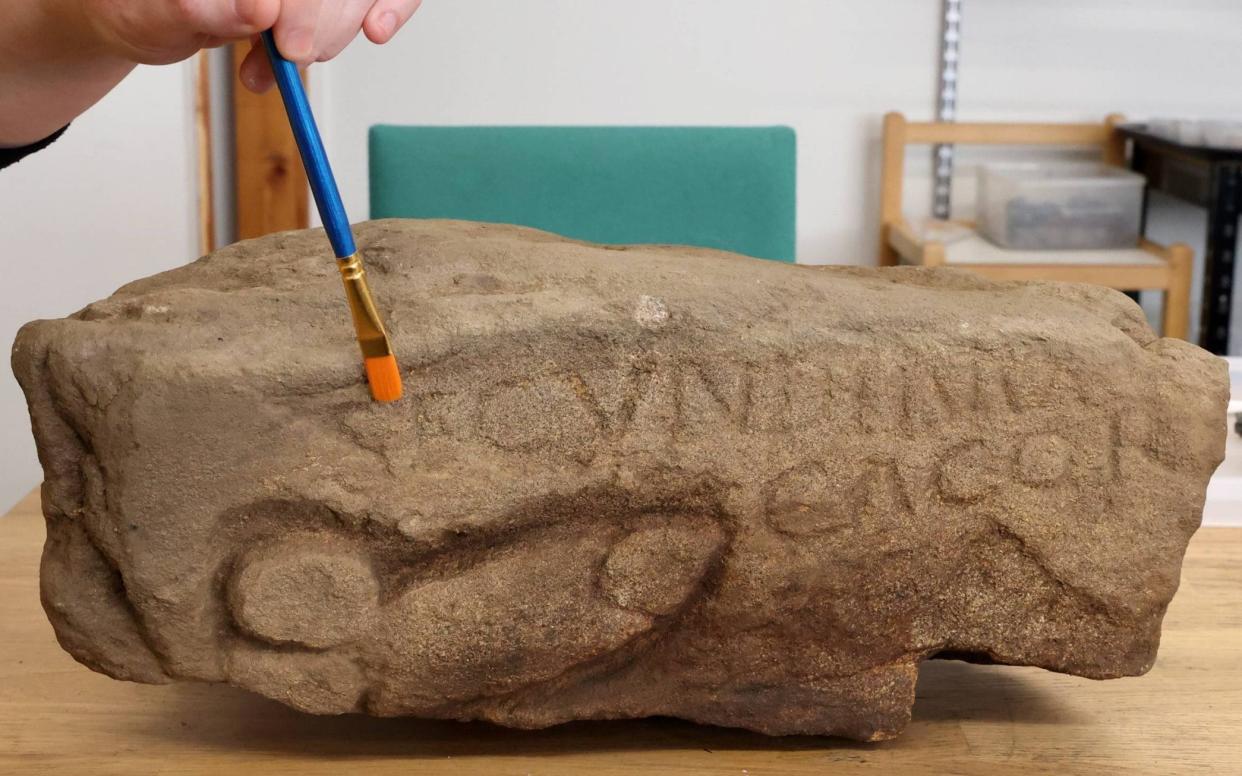Obscene graffiti on Hadrian’s Wall shows even the Romans weren’t above filthy humour

It is the most puerile scrawl that covers bus shelters and cubicle doors around the country, but even Roman soldiers couldn’t resist a giggle.
A large phallus has been unearthed at Hadrian’s Wall, lifting the lid on a 1,700-year-old feud between Roman soldiers.
The obscene graffiti, accompanied by Latin writing which brands a Roman soldier a "s---ter”, has been discovered carved into stone at the Vindolanda fort near Hexham, Northumberland.
Archaeologists believe the ancient scribbles were part of a spat between two Roman soldiers at the World Heritage Site.
The message reads, "SECVNDINVS CACOR," which translates as: "Secundinus, the s---ter."
Dr Andrew Birley, director of excavations at Vindolanda, said: "It's not unusual to find a phallus symbol because the Roman boys left these charms all over the place in the wish to be lucky.
"It's very likely it would have been carved by another Roman soldier because they were all trained in Latin, and it was from somebody who was literate.
"It shows that something as childish as graffiti was still going on back then which is amazing.
"It's really interesting to find evidence of conflict between fellow Romans.
'Humanity of the Romans'
"It reminds us of the humanity of the Romans who lived 2,000 years ago - it makes you feel a real connection with people.”
He said it was a “very strong statement” to carve a message out in stone and the team are hoping to find a retort as they continue their excavations.
The stone, which was found beneath the floor of a fourth-century cavalry barrack on the site by volunteers, measures 40cm wide by 15cm tall.
Dr Birley said the message would likely have taken hours to chisel and was “ultra rare”, though phallic imagery is common in Roman works. The stone is due to go on display next year.
The graffiti was discovered last week by Dylan Hebert, a retired biochemist from South Wales who was volunteering with the Vindolanda Trust.
“Only after we removed the mud did I realise the full extent of what I'd uncovered, and I was absolutely delighted,” he said.
Vindolanda was a Roman auxiliary fort just south of Hadrian's Wall, which it originally pre-dated, but is now a museum.
Archaeological excavations of the site show it was under Roman occupation from roughly 85 AD to 370 AD.
Experts believe it will take them another 150 years to fully excavate the entire site.

 Yahoo News
Yahoo News 
